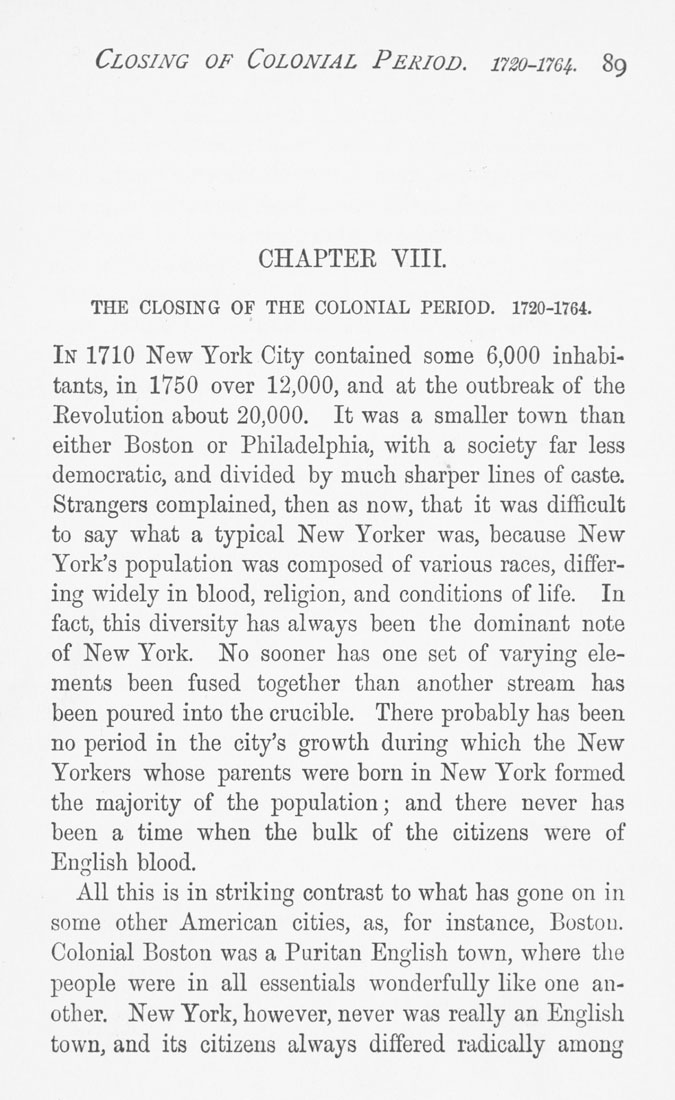Closing of Colonial Period. 1720-1764. 89
CHAPTEE VIIL
THE CLOSING OF THE COLONIAL PERIOD. 1720-1764.
In 1710 New York City contained some 6,000 inhabi¬
tants, in 1750 over 12,000, and at the outbreak of the
Eevolution about 20,000. It was a smaller town than
either Boston or Philadelphia, with a society far less
democratic, and divided by much sharper lines of caste.
Strangers complained, then as now, that it was difficult
to say what a typical New Yorker was, because New
York's population was composed of various races, differ¬
ing widely in blood, religion, and conditions of life. In
fact, this diversity has always been the dominant note
of New York. No sooner has one set of varying ele¬
ments been fused together than another stream has
been poured into the crucible. There probably has been
no period in the city's growth during which the New
Yorkers whose parents were born in New York formed
the majority of the population; and there never has
been a time when the bulk of the citizens w^ere of
English blood.
All this is in striking contrast to what has gone on in
some other American cities, as, for instance, Boston.
Colonial Boston was a Puritan English town, where the
people w^ere in all essentials wonderfully like one an¬
other. New York, however, never was really an English
town, and its citizens always differed radically among
|








